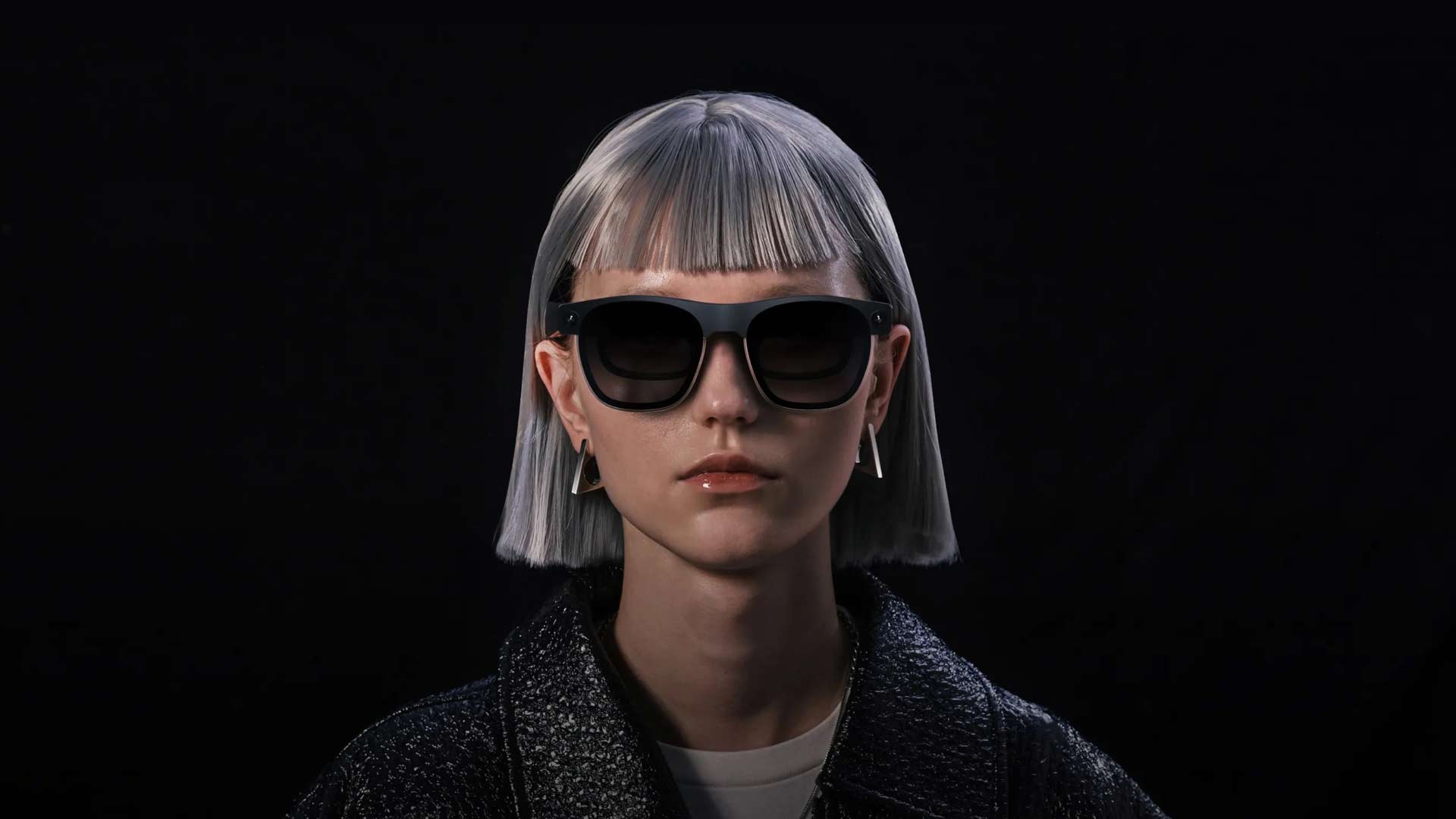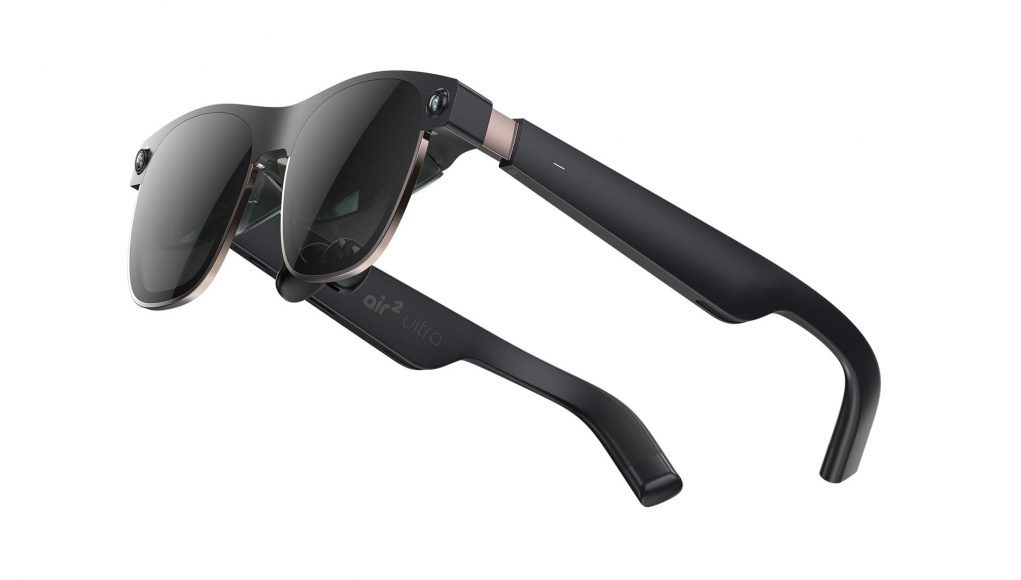China-based XR company Xreal (previously Nreal) announced its newest pair of glasses at CES 2024, marking the company’s return to augmented reality right as Apple is prepping its $3,500 Vision Pro for its upcoming launch.
Called Air 2 Ultra, the device is the first in the company’s most recent suite of glasses to incorporate inside-out tracking since the introduction of its consumer Nreal Light glasses in 2021.
Unlike its more recent Air 2 and Air 2 Pro, Air 2 Ultra are ‘true’ AR glasses in that they include cameras mounted on the face of the device.

Confusingly, the company calls those previous devices ‘AR’ too, but they’re actually closer to smartglasses since they don’t include positional tracking of any sort, or allow for the sort of room-sensing AR content you’d expect from an AR device like HoloLens 2, Magic Leap 2, or MR headsets like Quest 3 or Apple Vision Pro. Read more about what separates AR and smartglasses here.
Thanks to its dual cameras, the new Air 2 Ultra can do things like 6DOF positional tracking, image tracking, hand tracking, plane detection, depth meshing, and spatial anchoring of digital objects—putting it back into competition not only with the few companies preparing consumer AR glasses, but both Meta and Apple too, both of which have VR headsets capable of running AR apps (Meta Quest 3, Apple Vision Pro).
Xreal Air 2 Ultra isn’t an all-in-one standalone package however. Now in pre-order for $700 with March shipping, the glasses are slated to tether to Samsung S22 and S23 for AR stuff, and to iPhone 15, or any Mac or Windows machine that can run Xreal’s Nebula launcher.
At the moment, the company has no plans to expand the list of compatible phones for the Air 2 Ultra. The company says however it’s going to eventually produce a custom computing unit “for the best AR experience.”
Here’s a look at the specs:
| Size |
Length: 148.5 mm, Width: 48 mm, Height: 161.5 mm
|
| Weight | 80g |
| Display |
|
| LED Indicator Light |
Two LED Indicator Lights
|
| Ergonomic Design |
Titanium Frame, Zero-pressure Nose Pad (S/M/L), 3-position temple adjustment, Detachable prescription lens frame
|
| Electrochromic Dimming |
3-level Electrochromic Dimming
|
| Sensors |
Two 3D environment sensors: Hand tracking, Head tracking, Environment understanding, 6 DOF Tracking, Depth mesh, Spatial Anchor, Plane detection, Image Tracking
|
| Audio |
2 Built-in Stereo Speakers, Sound leakage reduction, 2 Microphones
|
| Compatibility |
|
| Buttons |
Multi-functional key (Single click to switch between dimming levels, Double-click to turn on/off the display), Up/Down button
|
| Connector |
USB-C DisplayPort Alt mode
|
| In the Box |
Air 2 Ultra, USB-C cable, Cleaning cloth, Protective case, User manual, Nose pad (S/M/L)
|







